Apple iPhone 7s, 7s Plus, iPhone 8 rumor review: design, specs, features, price, release date
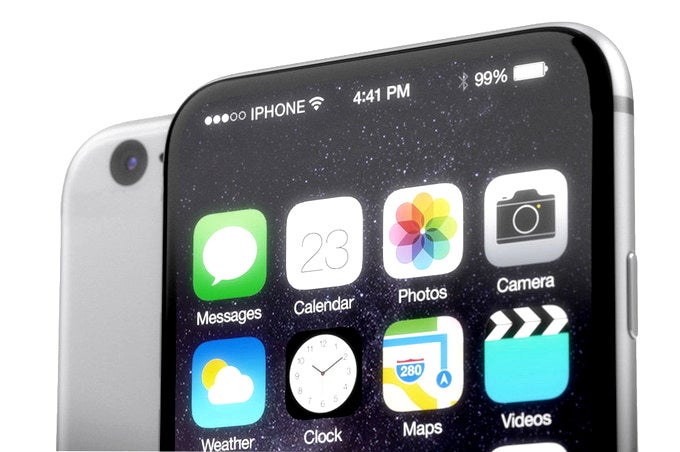
In 2017, we are expecting Apple to announce its next batch of iPhones. If logic is anything to go by, and it usually is, these will most probably be the iPhone 7s and the iPhone 7s Plus. Even if that's not what Apple ends up calling these, it's certain that the 4.7" and 5.5" iPhones are going to get succeeded by excellent devices.
We should not forget that 2017 marks the 10th anniversary of the iPhone lineup and Apple's been wildly rumored to have something quite exciting in the pipeline.
What is that exciting handset that we are talking about? Well, that one's is reportedly going to be a super-premium iPhone employing a host of exciting and intriguing features. Gossip says it's rolling under the "Ferrari" model name, though we've often heard that it would end up being called the iPhone 8. It is reportedly going to shake things up by introducing a new all-glass design, a curved OLED display, a dual-camera like the iPhone 7 Plus, and most definitely multiple other features that will remain a mystery until Apple unveils that device.
We have much to talk about, so let's not lose any more time! Gather 'round the campfire and let us talk about all the saucy leaks and rumors regarding next year's iPhones!
Contents
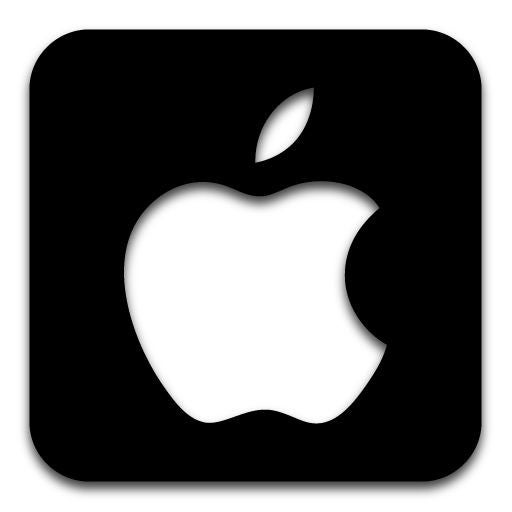
1. Design
2. Display
3. Hardware
4. Camera
5. Software features
6. Pricing and release date
Design
TL;DR:
- Overhauled design with high screen-to-body ratio
- No physical home button
- Fingerprint scanner embbeded within the display
- Dual camera at the back
- Waterproof
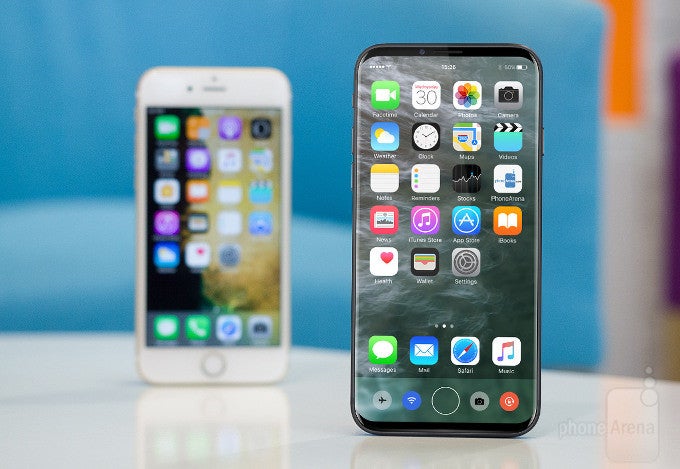
Bold and bezel-less
Unlike previous years, we have lots of reasons to believe that Apple will overhaul the design of its iPhones. Yes, we know that this gets speculated each and every year, but this time it's different -- while no design pictures or actual components have leaked just yet, most insiders believe that at least one of this year's iPhone will employ a predominantly glass design. Let's jump right into it!
All-glass body with a stainless steel frame
One of the analysts with the best track record around, KGI Securities' Ming-Chi Kuo, claims that the iPhone 7s and 7s Plus will indeed boast robust all-glass fronts and backs, probably somewhat similar to the iPhone 4 and 4s. Kuo's note adds that a strictly all-glass housing won't be possible due to "technological bottlenecks" and as such, will be accompanied by a metal frame. Apparently, Apple will ditch aluminum in favor of a more robust, stainless steel outer edge for the higher-end models.
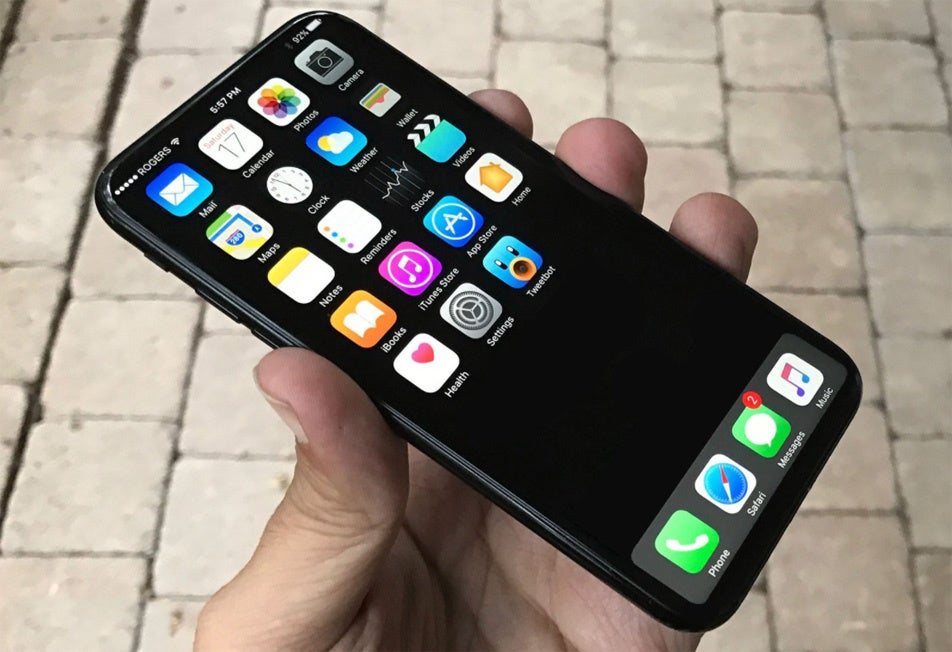
This will cost Apple more, but will give the top-tier iPhones a sturdy, premium finish. Kuo also expects both the 4.7 and 5.5-inch upcoming models to feature the glass chassis, but only the top-end version(s) will be supported by the steel frame. This is mostly similar to the way Apple differentiates the entry-level Apple Watch versions from their higher-end counterparts. If the latter rumor doesn't hold water, Apple will likely fall back to the same aluminum alloy that it used on the iPhone 7/7 Plus and iPhone 6s/6s Plus, namely the rigid and durable series 7000 aluminum alloy.
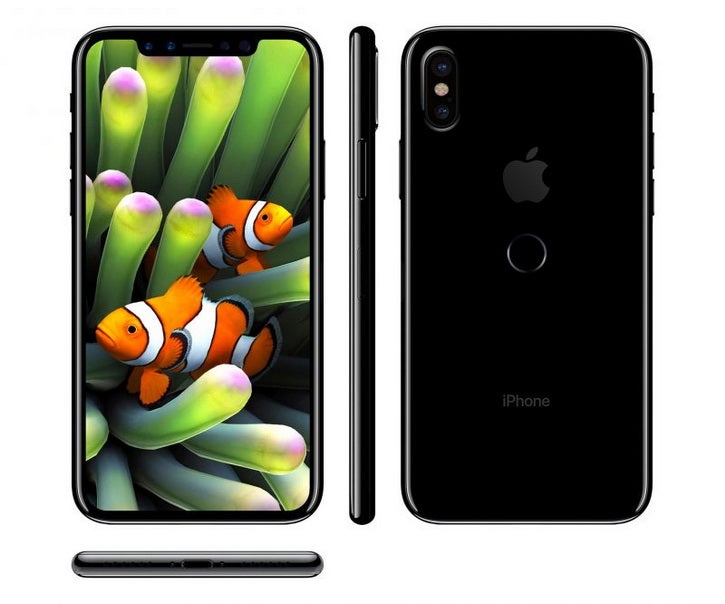
iPhone 8 based on leaked schematics
Wireless charging
The rumored predominant use of glass in the iPhone 7s , 7s Plus', and iPhone 8 build will allow Apple to throw in wireless charging, which is a feature that prolific Apple insider Ming-Chi Kuo mentioned a roughly two months ago. Here's what he had to say on that matter:"We believe one of the reasons why new iPhones will switch from metal casing to glass casing is to support wireless charging. In order to ensure a superior performance, we believe it is most appropriate for EMS suppliers to develop and make the wireless charger because then a comprehensive test can be conducted. As Hon Hai needs to deploy most resources to develop and produce OLED iPhone, we expect Pegatron will be the exclusive supplier of the wireless charger." – -Ming-Chi Kuo, Apple analyst
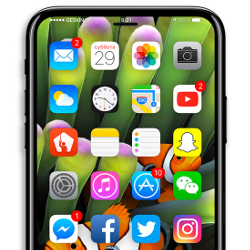
Multiple leaks and insider tips have been trying to convince us for a while now that the iPhone 8, in particular, will be "mostly display" at the front. Of course, there will be bezels, but these will be as thin as they come, similar to the Samsung Galaxy S8/S8+ and the LG G6.
No home button
Apple's also pegged to be ditching the physical home button, which has been a staple for 9 years now. At least that's what we are hearing about the iPhone 8. In lieu of such hardware element, Cupertino will likely use its taptic engine to simulate the feel of touching a hardware button. The removal of the moving home button with the iPhone 7 is a dead giveaway for Apple's desire to altogether get rid of this hardware element. Supposedly, users will be able to 3D Touch the screen in a specific place in order to go to their home screen, which is mainly what that button's used for. They've got the technology, now they only need the courage!
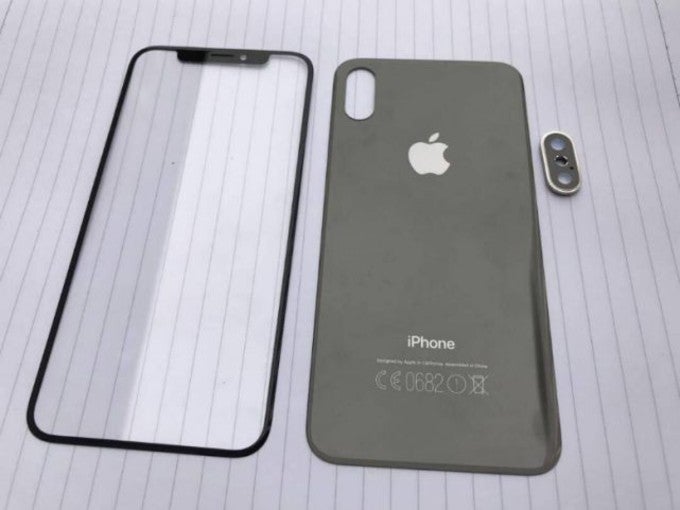
Leaked iPhone front and back panels
What about the fingerprint sensor?
Ditching the home button would also mean that the fingerprint button will have to find a new place. Everyone's idea seems to be, all things considered, mostly the same: Apple will have to embed the fingerprint scanner in the display since a rear-positioned physical sensor is totally not a logical idea. Luckily for Apple, there's already a trove of such sensors out and about -- the Koreans from Crucial Tek were first to announce such a solution, then Qualcomm's ultrasonic one followed, and the Synaptics juggernaut wasn't far behind. One of these technologies below might be just what the doctor ordered so that the iPhone 7s. 7s Plus and iPhone 8 ditch the home key/finger scanner combo for good.Unfortunately, we might not know about the placement of Touch ID until we get closer to September. As we've discussed before, Apple apparently has two plans for dealing with its fingerprint scanner/home button. Plan "A" calls for it to be embedded under .55 to .65 inches of the rumored 5.8-inch touch screen. If this cannot be worked out in time, Plan "B" has a physical Touch ID button located on the back of the phone. While a recently leaked iPhone 8 case revealed a circular cutout in the back that seemed to be made for a rear-facing Touch ID button, those in the know say that the cutout is for the Apple logo.
Actually, Apple already has been granted a few patents that drop a few hints about the iPhone's button- and bezel-less future.
Water-resistance is here to stay
While it's true that we've heard nothing in particular related to the water-resistance of the iPhone 7s and 7s Plus, it's pretty logical to assume that this feature will be here to stay from now on. Water-resistance is undoubtedly a useful trait to have and it will hardly remain an exclusive one-off addition to the iPhone 7/7 Plus.
How will it compare against the iPhone 7 and iPhone 7 Plus, among others?
Apple iPhone 8 will feature dimensions of 143.59 x 70.94 x 7.57 mm. To put these numbers in perspective, the Apple iPhone 7 measures 138.3 x 67.1 x 7.1 mm. That means that the iPhone 8 will be bigger all around than the iPhone 7. Compared to the Apple iPhone 7 Plus, which weighs in at 158.2 x 77.9 x 7.3 mm, the iPhone 8 is smaller. This is true even if the latter carries a larger screen. The edge-to-edge near bezel-less look of the tenth- anniversary edition makes this possible. Benjamin Geskin, who has produced several iPhone renders this year, has created some interesting images for everyone to peruse. The first shows the Apple iPhone 8 sandwiched in between the Apple iPhone 7 and Apple iPhone 7 Plus. Again, what is interesting is how the screen of the iPhone 8 is larger than the one on the iPhone 7 Plus even though the actual phone is smaller. The second image he created shows the Apple iPhone 8 in between the Samsung Galaxy S8 and Samsung Galaxy S8+.
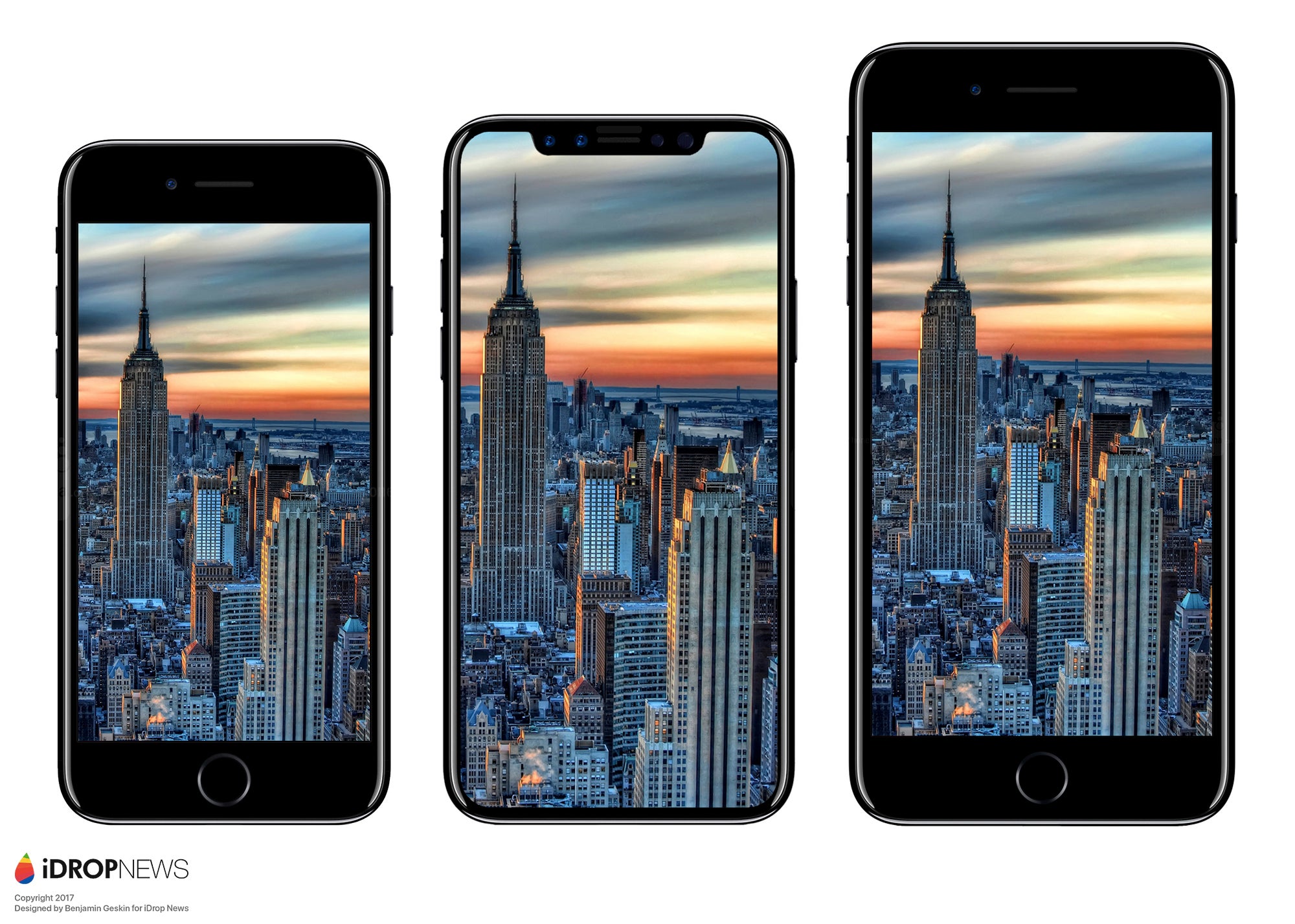
From left to right - iPhone 7, iPhone 8, iPhone 7 Plus
And here's how the next iPhone might look like propped next to a Galaxy S8 and S8+:
Display
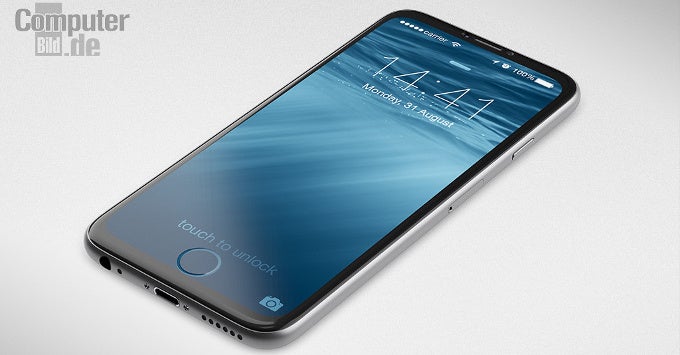
Just like the iPhone 7 and the iPhone 7 Plus, 2017's iPhone 7s and 7s Plus are expected to come with 4.7" and 5.5" displays. Both of these, similar to their long-time predecessors, are pegged to arrive with LCD displays. We are certain that these will retain the exceptional qualities of the iPhone 7/7 Plus displays, which boasted perfect colors and excellent brightness. We've heard nothing in particular about any resolution changes, so until further notice, we still think that the iPhone 7s will come with a 750 x 1334-pixel resolution, whereas its larger sibling will still utilize a full HD display panel.
Now, the rumored iPhone 8 will reportedly boast a 5.8-inch flexible OLED display. What's interesting here is that the display's active area is tipped to be either 5.1 or 5.2 inches in size, with the rest of the screen wrapping around the side frame of the phone and seamlessly fusing with the chassis of the phone. As we mentioned before, unlike the rest of the lineup, this one will most likely be an OLED one, a first for Apple. Samsung Display has been pegged as the exclusive supplier for that one, with over 40 million OLED display panels tipped to be supplied by the contractor. Still, all the other players in the OLED industry— Sharp, JDI, AUO and LG—have also been rumored to be in the cards for supplying panels, which makes us think that Samsung might not be the exclusive contractor.
But why OLED, and why flexible? Well, simple, that's a prerequisite for the rumored curved display. LCD screens can't do yet but OLED ones can. That's because you can produce OLED displays on a plastic substrate and bend the display as much as you like, while LCDs can only be manufactured onto a glass substrate. A recent report originating from South Korea claims that the "OLED version of the new iPhone will all be curved as Apple ordered all plastic OLED - not glass - from Samsung Display. Samsung is capable of supplying a little less than 100 million units of curved OLED displays to Apple."
Hardware
An A11 chipset is (almost) a given
So far, we've heard a bunch of rather logical rumors regarding the hardware inside the iPhone 7s and 7s Plus. The iPhone 7 and 7 Plus arrived with quad-core 2.4GHz Apple A10 Fusion chipsets inside, and the rumor mill is quick to logically assume that the next batch of phones will arrive with A11 chips inside. Apple is consistent with their naming schemes, so we are convinced that at least this name is a given.
However, as far as it comes to the specs of said Apple A11 chipset, the rumor mill is as dry as Death Valley. A couple of months ago we heard that Taiwan-based TSMC might be the exclusive manufacturer of the system-on-chip and will be using a 10nm FinFET manufacturing process, but since then, information about the upcoming silicon muscle has been vague at best.
On a related note, the leaked benchmark results of the supposed Apple A10X chipset, expected to power Apple's next iPad Pro tablets, paint a pretty exciting picture for 2017 - this one ranked pretty high in Geekbench, tallying 4236 on the single-core test and 6588 on the multi-core test. That compares to scores of 3490 (single-core) and 5580 (multi-core) for the A10 chipset. If the Apple A11 retains that momentum, it should be an even beastlier specimen, at least in theory. We drool with anticipation!

Apple A10X at the rightmost, Apple A10 immediately to the left of it. Imagine the Apple A11's performance!
RAM: same old, same old, or not?
In terms of RAM, we have heard nothing in particular, so we will assume that the regular iPhone 7s will come with 2GB of RAM, while the 7s Plus will keep things running fluently with 3 gigs of RAM. As far as the iPhone Ferrari is concerned, we can only speculate.

Storage: no changes expected
Much to everyone's approval, Apple finally ditched the lowly 16GB version of its iPhone lineup with the iPhone 7/7 Plus last year, which boast 32 gigs of storage in their basic versions, expanding to 128GB and 256GB. We don't expect anything to change next year, since Apple's unlikely to drastically change such a vital component two years in a row – in 2017, we will most likely have 32, 128, and 256GB storage options for the iPhone 7s and 7s Plus. As far as the premium "Ferrari" model is concerned, we will once again go out on a limb - we suppose it will match the rest of the lineup in terms of storage options or only ship with 256GB on board.
One such developer, Guilherme Rambo, has found some information pertaining to the Face ID setup process for the Apple iPhone X. This is the tenth anniversary model that will feature an OLED panel. Apple was unable to embed fingerprint scanner Touch ID under the OLED screen. At the same time, it will be doing away with the home button. As a result, Apple had to resort to plan B. That apparently calls for the use of a front-facing camera that will use 3D scanning to recognize users' faces.
With this facial recognition system, the camera will be able to unlock the iPhone X and verify identification for Apple Pay. In other words, any application that requires Touch ID can employ facial recognition instead. You might recall that Apple analyst extraordinaire Ming-Chi Kuo called this set up "Revolutionary," when he told KGI Securities clients about it back in February.
To set up Face ID, iPhone X users will take selfies of their face from various angles. Apple's purchase of tech firm RealFace probably played a huge part in this new feature. The Israeli company's technology is said to be highly accurate when it comes to facial recognition, and can confirm a match in "millionths" of a second. The software will internally produce a 3D map of a user's face, which adds an extra layer of security for the phone. RealFace's tech is so sensitive, that it can correctly identify identical twins.

3D face-mapping
One such developer, Guilherme Rambo, has found some information pertaining to the Face ID setup process for the Apple iPhone X. This is the tenth anniversary model that will feature an OLED panel. Apple was unable to embed fingerprint scanner Touch ID under the OLED screen. At the same time, it will be doing away with the home button. As a result, Apple had to resort to plan B. That apparently calls for the use of a front-facing camera that will use 3D scanning to recognize users' faces.
With this facial recognition system, the camera will be able to unlock the iPhone X and verify identification for Apple Pay. In other words, any application that requires Touch ID can employ facial recognition instead. You might recall that Apple analyst extraordinaire Ming-Chi Kuo called this set up "Revolutionary," when he told KGI Securities clients about it back in February.
To set up Face ID, iPhone X users will take selfies of their face from various angles. Apple's purchase of tech firm RealFace probably played a huge part in this new feature. The Israeli company's technology is said to be highly accurate when it comes to facial recognition, and can confirm a match in "millionths" of a second. The software will internally produce a 3D map of a user's face, which adds an extra layer of security for the phone. RealFace's tech is so sensitive, that it can correctly identify identical twins.

Camera
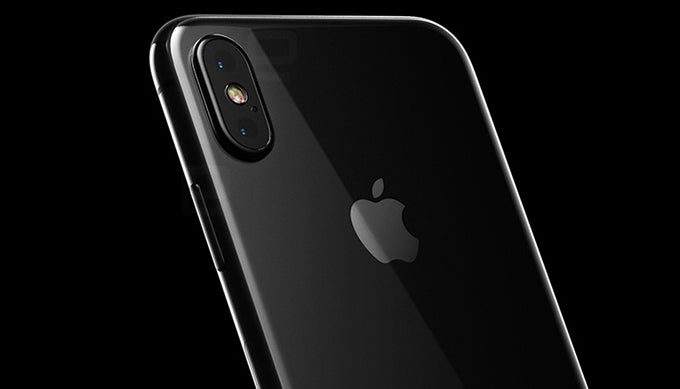
With last year's introduction of the dual-lens camera system on the iPhone 7 Plus, Apple has essentially opened a whole new room of possibilities for its 2017 iPhone lineup. Is the dual-camera setup going to remain an exclusive feature for the larger iPhone? Is the rumored iPhone 8 scoring this one?
The rumors we've heard so far have been pretty scarce, but industry insiders have suggested that the iPhone 7s might not be getting a dual-camera setup. This feature will reportedly remain an exclusive for the iPhone 7s Plus and the more premium iPhone 8, which seems like a rather logical step for Apple to take.
As far as technicalities go, we expect Apple to improve on the already solid basis established by the hardware inside the iPhone 7 and the 7 Plus. Both have the same 12MP, f/1.8 lens main shooter with large 1.22 μm pixels that projects light straight onto a 1/3" back-illuminated sensor. The difference is that the larger iPhone boasts a secondary 12MP f/2.8 lens with a larger focal length that paves the way for lossless, 2.0x optical zoom.
The camera UI will offer Digital-Single Lens Reflex type images using different lighting effects to simulate depth. Just like Portrait Mode launched in beta last year, Portrait Lighting might do the same thing. This feature will support Contour Light, Natural Light, Stage Light, Stage Light Mono, and Studio Light.
Video resolution and capture speeds for iOS 11 will include:
- 1080p HD at 240 fps 480 MB with 1080p HD at 240 fps
- 4K at 24 fps (Footer) 270 MB with 4K at 24 fps (film style) (HEVC Footer) 135 MB with 4K at 24 fps (film style)
- 4K at 60 fps (Footer) 450 MB with 4K at 60 fps (higher resolution, smoother) (HEVC Footer) 400 MB with 4K at 60 fps (higher resolution, smoother)
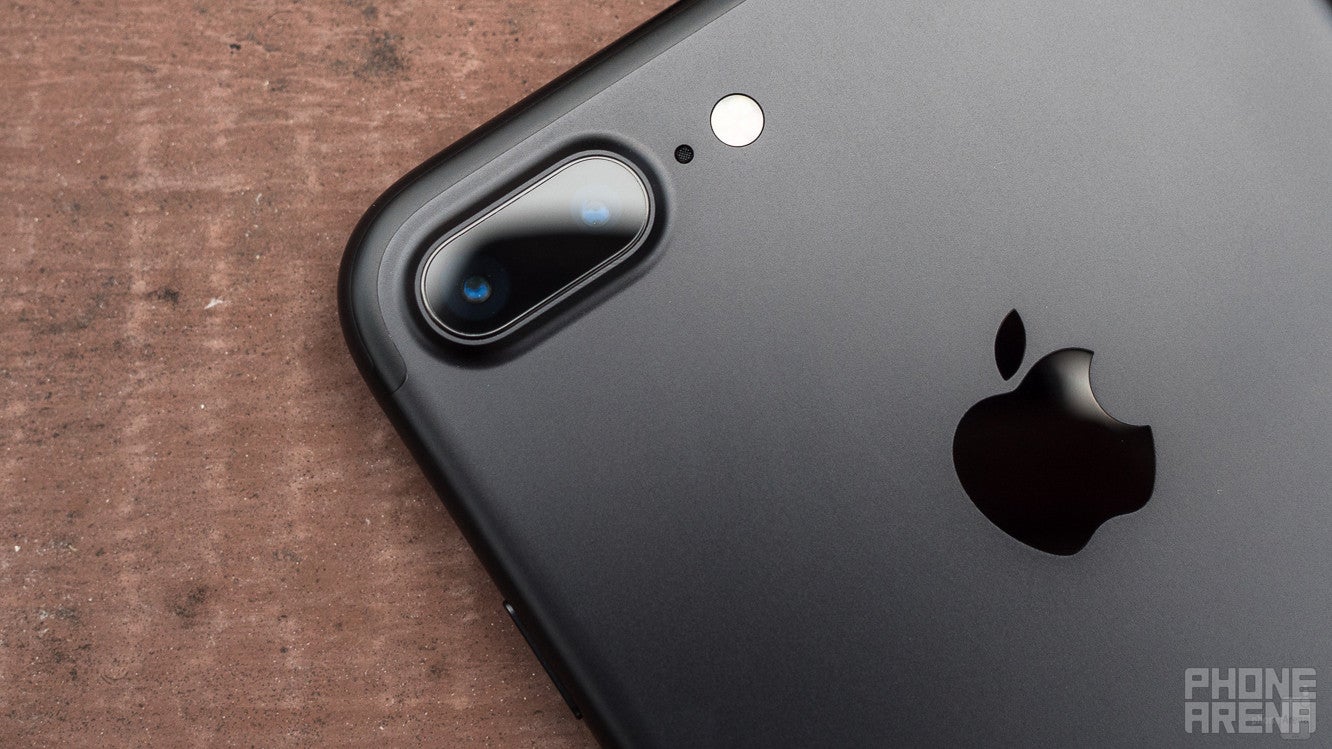
So, why employ a vertical camera setup? There's a perfectly good reason for that: Yes, that's what we're getting at. If Apple has serious plans for VR/AR, the iPhone 8 may have a vertically-oriented dual-cam setup to allow for recording stereoscopic 3D videos/images in landscape orientation. In other words, the so-called “vertical” camera setup is vertical only when you're holding your phone vertically, if that makes any sense.
In order to shoot in 3D, you need two lenses side by side that are working simultaneously to create depth, just like your eyes right now. But then, if you have two “horizontally” aligned cameras on the back your phone, you can't do 3D in landscape mode, because then the lenses wouldn't be next to each other when you turn your phone to the side. And since the only way to watch a VR video on your phone is place it in a headset and have it in front of your eyes in a horizontal orientation, it wouldn't make any sense to have the ability to shoot vertical stereoscopic videos or images.
Pricing and release date
TL;DR:
- Apple might announce the iPhone 7s/iPhone 8 on September 17
- Sales are pegged to kick off September 25
Benjamin Geskin — a leakster that has been spinning iPhone 8 leaks like mad in the past couple of months — has tweeted out that the Apple keynote that will reveal the hot new handset will be held on the 17th of September and sales would start on the 25th of September. Of course, there's no way to confirm the validity of this information, so take it with a grain of salt.
September releases have been the norm for the past five years and we expect this to remain unchanged this year as well. Right below, you will find a table that clearly shows the announcements and the subsequent market releases for all iPhones so far.
| Previous iPhone releases | ||
| Model | Announced | Released |
| Apple iPhone | 1/9/2007 | 1/29/2007 |
| Apple iPhone 3G | 6/9/2008 | 7/11/2008 |
| Apple iPhone 3GS | 6/8/2009 | 6/19/2009 |
| Apple iPhone 4 | 6/7/2010 | 6/24/2010 |
| Apple iPhone 4s | 10/4/2011 | 10/14/2011 |
| Apple iPhone 5 | 9/12/2012 | 9/21/2012 |
| Apple iPhone 5s/5c | 9/10/2013 | 9/20/2013 |
| Apple iPhone 6/6 Plus | 9/9/2014 | 9/19/2014 |
| Apple iPhone 6s/6s Plus | 9/9/2015 | 9/25/2015 |
| Apple iPhone 7/7 Plus | 9/7/2016 | 9/16/2016 |
Further corroborating with that rumor is the fact that Apple has allegedly posted blackout dates for Apple employees staff, between September 17 and November 4, suggesting that this would be a busy period when it will need all hands on deck. The information comes from what looks like an official Apple memo to staff, obtained by Apple enthusiast Benjamin Geskin.
"Keep in mind that these dates are subject to change as our support volume expectations fluctuate," the memo says.
As far as price goes, we expect Apple to price the iPhone 7s and 7s Plus similarly to what the iPhone 7 and 7 Plus cost at launch. Here's the pricing of those two at launch.
| Apple iPhone 7 | 32GB | 128GB | 256GB |
| Price | $649 | $749 | $849 |
| Apple iPhone 7 Plus | 32GB | 128GB | 256GB |
| Price | $769 | $869 | $969 |
As far as the rumored and rather exciting iPhone 8 is considered, it doesn't take a genius to deduce that its premium exterior and features will likely come at a higher price. We have zero idea what Apple is going to charge for that one, but one thing is for certain - dedicated fans will likely be willing to spend as much money Apple is willing to charge for its premium iPhone.

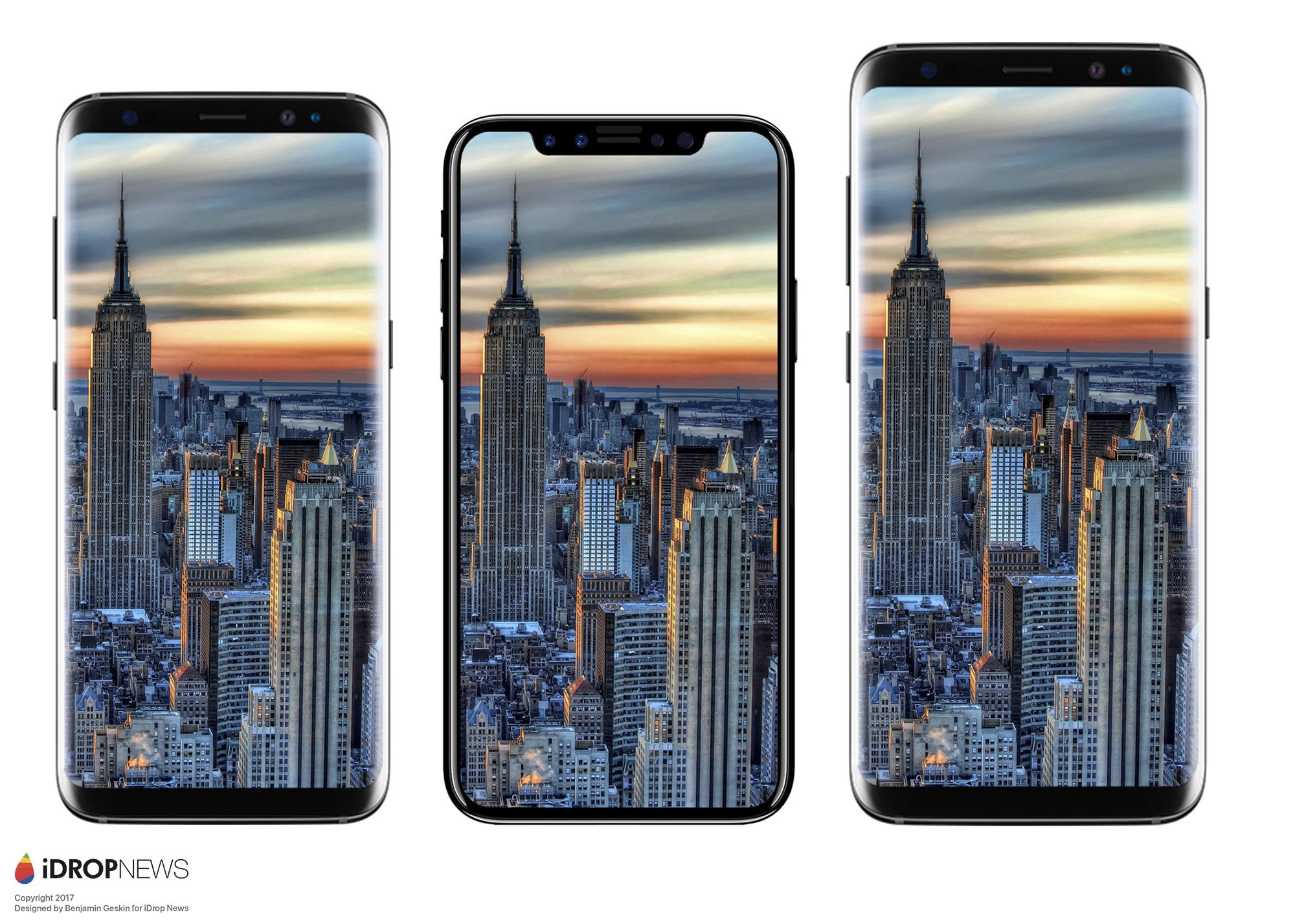












Things that are NOT allowed: